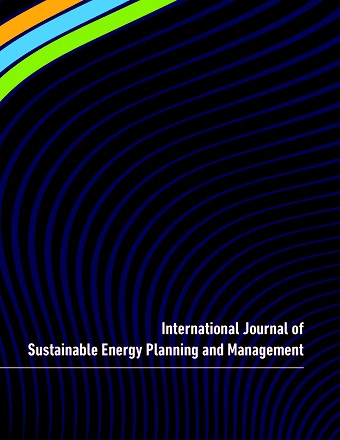Techno-economic evaluation of electricity price-driven heat production of a river water heat pump in a German district heating system
Main Article Content
Abstract
Large scale heat pumps (HP) are an important technology that will link district heating (DH) systems to the electricity sector in future smart energy systems. This paper examines the feasibility of the integration of a river water HP at a combined heat and power plant in Germany. It is part of a more extensive study about the transformation of a DH system in an urban district towards a 4th generation DH system. The focus is on operational characteristics and economic efficiency of electricity price-driven heat production. A novel method for estimating the coefficient of performance (COP) of two-stage ammonia HPs based on the difference between sink and source temperature is presented. The HP achieves a seasonal COP in the range of 3.4 to 3.7. The 15-year simulation with the software energyPRO shows that electricity-price driven operation is especially relevant for lower heat loads during the non-heating season. The correlation between volatility of electricity market price change and flexible operation is analysed. Finally, the levelized cost of heat for four designs with heat outputs of the HP from 4.7 MWth to 6.1 MWth and increasing storage sizes are compared. The results indicate that electricity costs are reduced in more flexible systems, but cost parity to the minimum dimensioning is not yet reached with the underlying economic framework conditions. However, the parameters that benefit the economic efficiency of more flexible systems are discussed.
Article Details
Articles published in International Journal of Sustainable Energy Planning and Management are following the license Creative Commons Attribution-NonCommercial-NoDerivs 3.0 Unported (CC BY-NC-ND 3.0)
Authors retain copyright and grant the journal right of first publication with the work simultaneously licensed under a Creative Commons Attribution License: Attribution - NonCommercial - NoDerivs (by-nc-nd). Further information about Creative Commons
Authors can archive post-print (final draft post-refereering) on personal websites or institutional repositories under these conditions:
- Publishers version cannot be stored elsewhere but on publishers homepage
- Published source must be acknowledged
- Must link to publisher version

